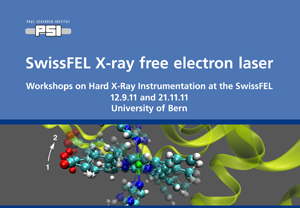Speaker
Dr
Gaia Pigino
(Paul Scherrer Institut)
Description
Our main focus is structural biology of eukaryotic flagella/cilia using electron cryo tomography and microscopy (cryo-EM). Cryo-EM provides images of biological macromolecules and organelles in their intact hydrated states.
The biological material in solution is spread on an EM grid and is preserved in a frozen-hydrated state by quick plunge freezing in liquid ethane at liquid nitrogen temperature. By maintaining specimens at liquid nitrogen temperature, they are then transferred into the high vacuum of the electron microscope column. Biological specimens are extremely radiation sensitive, so they must be imaged with low-dose techniques.
Since the images are extremely noisy, computational image analysis must be used to enable three-dimensional reconstruction. For highly symmetrical objects (2D crystal of membrane proteins, tubular crystals, icosahedral viruses) atomic resolution could be reached. For some biological systems it is possible to extract images of identical structures, align and average them to increase the signal-to-noise ratio and retrieve high-resolution information using the technique known as single particle analysis. This approach requires that the things being averaged are identical (some limited conformational heterogeneity can investigated by image classification). With this technique 3D reconstructions from cryo-EM images of protein complexes and viruses have been solved near-atomic resolution. In electron cryo-tomography images are acquired multiple times from an ice-embedded specimen tilted continuously in the microscope and merged into a 3D structure. This is a suitable method to analyze macromolecules forming complex and dynamic molecular networks in vivo. If there are identical structures in tomograms, these volumes can be extracted (subtomograms) and averaged to improve signal-to-noise ratio.
We apply these methods to reveal the mechanism of flagellar/ciliary bending motion in eukaryotes. In flagella/cilia, which consist of ~600 proteins, nine microtubule doublets are linked by dynein motor proteins. The activity of these motors is regulated by mechano-chemical interactions between a central pair of microtubules and big radial complexes of proteins (radial spokes), which are anchored to the nine-microtubule doublet. We revealed molecular arrangement of dynein, radial spokes, and other proteins by electron tomography and refine high-resolution structures by single particle analysis.
Authors
Dr
Gaia Pigino
(Paul Scherrer Institut)
Dr
Takashi Ishikawa
(Paul Scherrer Institut)
Co-authors
Ms
Aditi Maheshwari
(ETH, Zürich)
Dr
Bara Malkova
(Paul Scherrer Institut)

